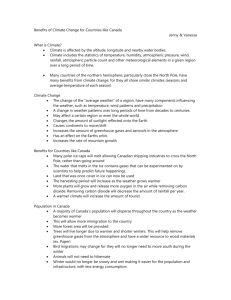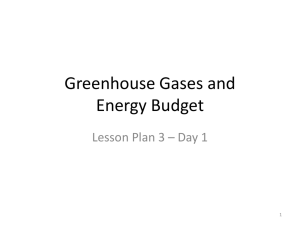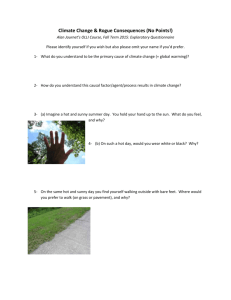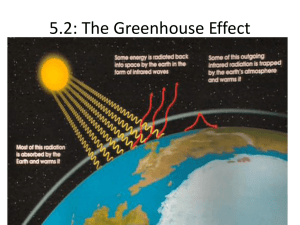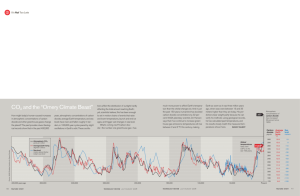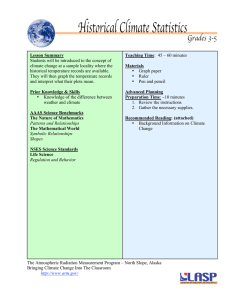Atmosphere 5, 6, 8, 9 and 11 Review Atmo5 Identify these gases as
advertisement
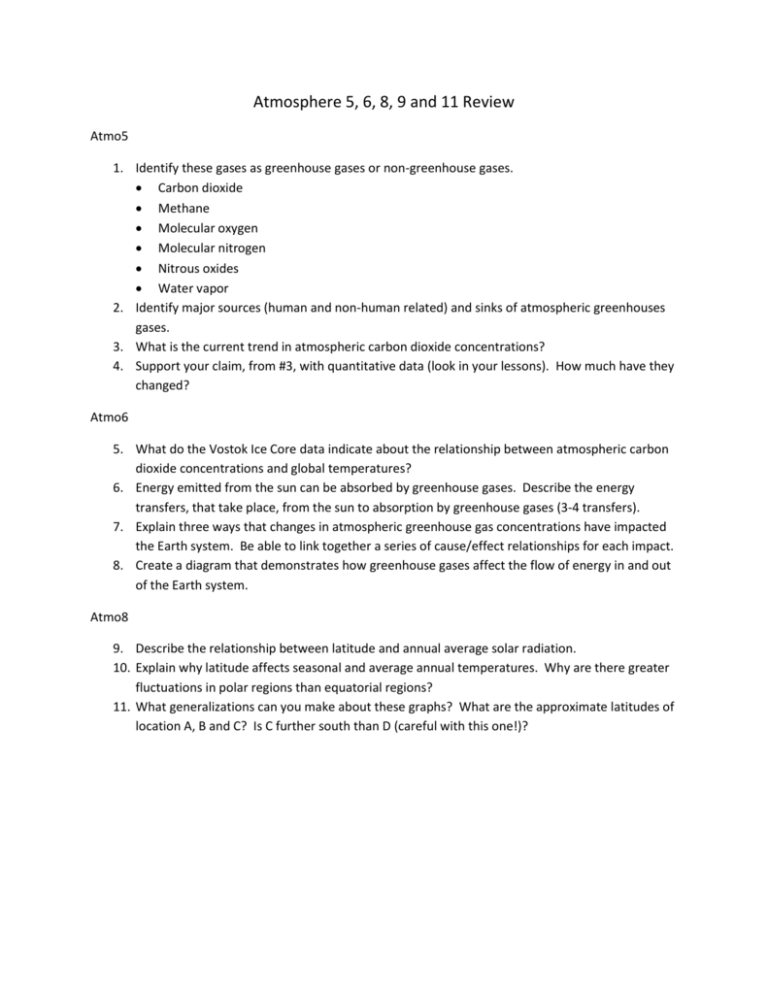
Atmosphere 5, 6, 8, 9 and 11 Review Atmo5 1. Identify these gases as greenhouse gases or non-greenhouse gases. Carbon dioxide Methane Molecular oxygen Molecular nitrogen Nitrous oxides Water vapor 2. Identify major sources (human and non-human related) and sinks of atmospheric greenhouses gases. 3. What is the current trend in atmospheric carbon dioxide concentrations? 4. Support your claim, from #3, with quantitative data (look in your lessons). How much have they changed? Atmo6 5. What do the Vostok Ice Core data indicate about the relationship between atmospheric carbon dioxide concentrations and global temperatures? 6. Energy emitted from the sun can be absorbed by greenhouse gases. Describe the energy transfers, that take place, from the sun to absorption by greenhouse gases (3-4 transfers). 7. Explain three ways that changes in atmospheric greenhouse gas concentrations have impacted the Earth system. Be able to link together a series of cause/effect relationships for each impact. 8. Create a diagram that demonstrates how greenhouse gases affect the flow of energy in and out of the Earth system. Atmo8 9. Describe the relationship between latitude and annual average solar radiation. 10. Explain why latitude affects seasonal and average annual temperatures. Why are there greater fluctuations in polar regions than equatorial regions? 11. What generalizations can you make about these graphs? What are the approximate latitudes of location A, B and C? Is C further south than D (careful with this one!)? 12. Create a model/sketch of the Earth-sun system for June 21, March 21, September 21 and December 21. Show the relative insolation angles of at least 4 locations and identify the approximate location where the insolation angle is 90 degrees. Atmo9 13. 14. 15. 16. 17. Define albedo. Describe differences in albedo between sea ice and open sea water. Verbally describe #13 and #14 to your parent. Explain how changes to Earth’s albedo contribute to atmospheric warming. Use data, found in your lesson, to make and support a claim about the connection between albedo, ice, solar energy and surface temperatures. Atmo11 18. Access some of the geoscience data found at this URL: http://www.globe.gov/do-globe/forteachers/resources/additional-teaching-resources/earth-system-science-posters It is best to focus on one variable at this point. Identify a spatial (over a physical distance) trend in the data you are viewing. Identify a temporal (over a period of time) trend in the data. 19. Attempt to link together a chain of cause/effect relationships between at least 4 variables. Support your claims with quantitative data! 20. Research the feedback loop involving permafrost, methane, the greenhouse effect and surface temperatures. This is the feedback loop you’ll be asked to describe on your test. Data will be provided but try to get comfortable using quantitative data to support these cause/effect relationships.

